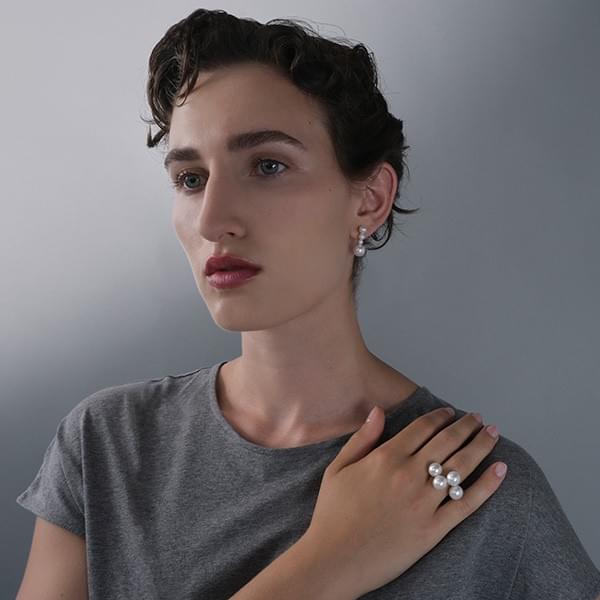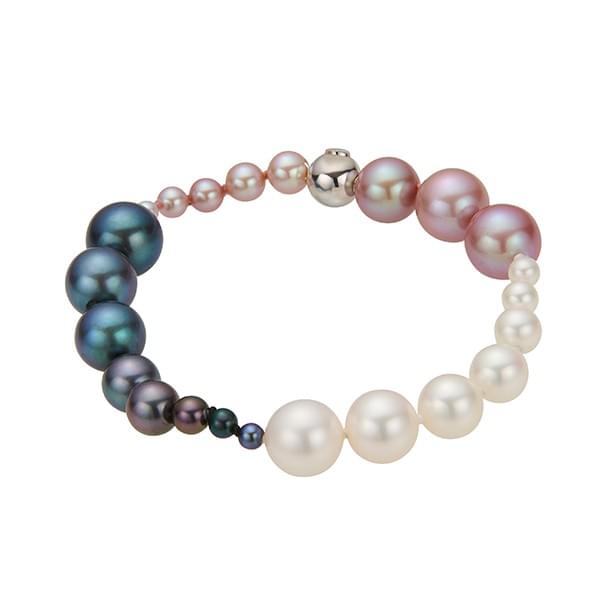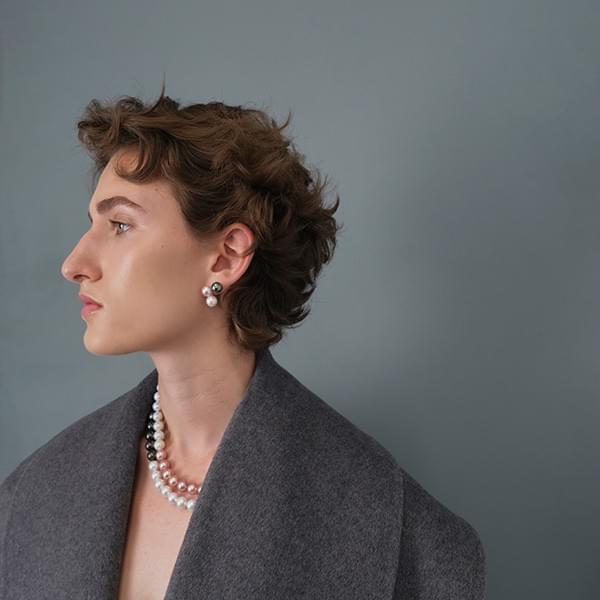
The Emotional Palette Behind Tria
Melanie Georgacopoulos’ new Tria collection draws you in with three distinct pearl colors—classic white, soft lavender, and rich peacock. She says these colors map to human emotions: serenity for white, warmth for lavender, and “anger, frustration, darkness” for peacock. The name Tria (Greek for “three”) reflects not just the color triad, but her literal design philosophy. Freshwater Akoya, South Sea, and Tahitian pearls are paired with metals: 18k white and yellow gold, and even black ruthenium–plated silver. Prices run from $3,670 for an ascending ring to $11,800 for a double-strand necklace.
Craftsmanship vs Sustainability: Where Do the Pearls Align?
Designers often talk about beauty and emotion—but in a marketplace increasingly defined by ethical jewelry expectations, do pearl colors and craftsmanship offset concerns over sourcing and environmental impact? Georgacopoulos sources an array of pearls and introduces marine diamonds for the first time in this series, complete with provenance certification via Ocean Diamonds. These choices hint at transparency—but do they go far enough in a world where lab-grown diamonds and sustainable gemstones are growing in consumer demand?

Lavender, peacock and white freshwater pearls ascend in size. on the Tria bracelet ($4,600), which is finished with a hidden 18k white gold ball clasp.
Marine Diamonds & Traceability
One of the boldest parts of Tria is its inclusion of marine diamonds—diamonds sourced from the ocean floor—and the use of certificates of provenance. Georgacopoulos links these choices to her affinity with marine elements, pearls, and a desire for more sustainable sourcing. Still, critics may ask: are marine diamonds truly more sustainable or just novel? Also, in comparison to lab-grown diamonds, which can often ensure lower environmental disruption, how do marine diamonds measure up?

Tria stud earrings ($5,905), shown here with lavender and white pearls, are available in other color combinations; the model also wears the double strand necklace ($11,800) featuring black Tahitian pearls on 18k yellow gold.
Is the Pearl Narrative Enough for Modern Jewelry Lovers?
The collection’s visual harmony, hidden clasps, minimalist metalwork, and bold color combinations are clearly meant to evoke emotion. But with consumers increasingly educated about sourcing, sustainability, and alternatives like sustainable gemstones jewelry brands, is emotional appeal sufficient? Or do modern buyers expect full lifecycle transparency—ethically sourced pearls, metal refinements, carbon footprints, and maybe even lab-grown alternatives?
The Fine Line Between Artistry and Ethical Expectations
Tria stands as a strong statement of artistry and aesthetic intent. But its true test may be whether it satisfies the rising bar for what people mean by ethical jewelry. Does sourcing marine diamonds and using pearls automatically grant a collection that label? Or is it merely positioned art—beautiful, evocative, but falling short of holistic sustainability when measured against eco-conscious alternatives like lab-grown diamonds and sustainable gemstones? The debate around Tria could be a microcosm of the larger shift in the jewelry industry.
